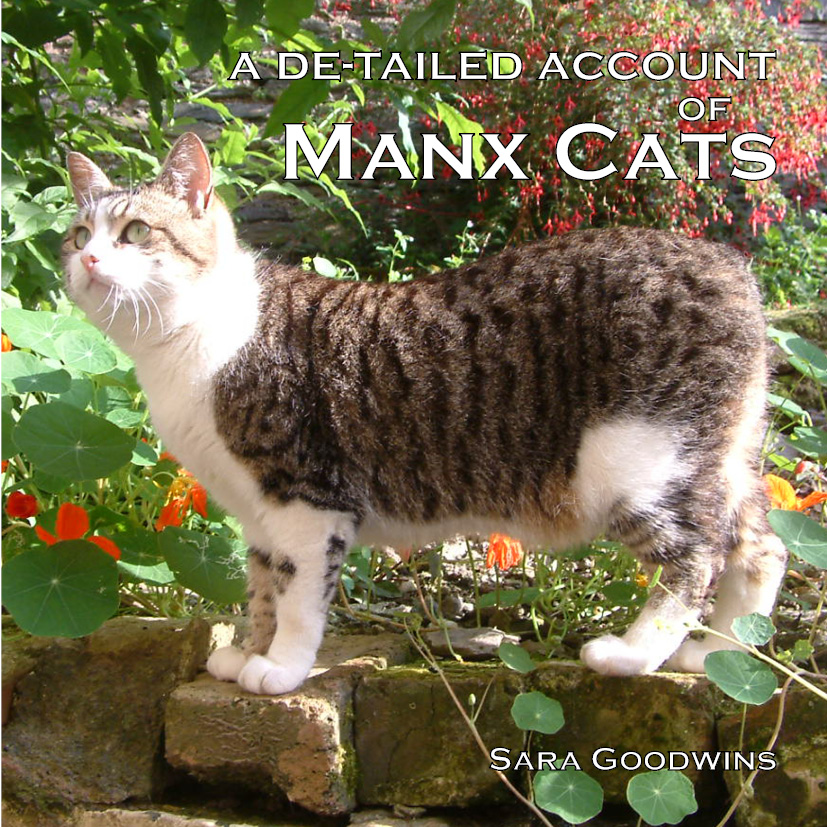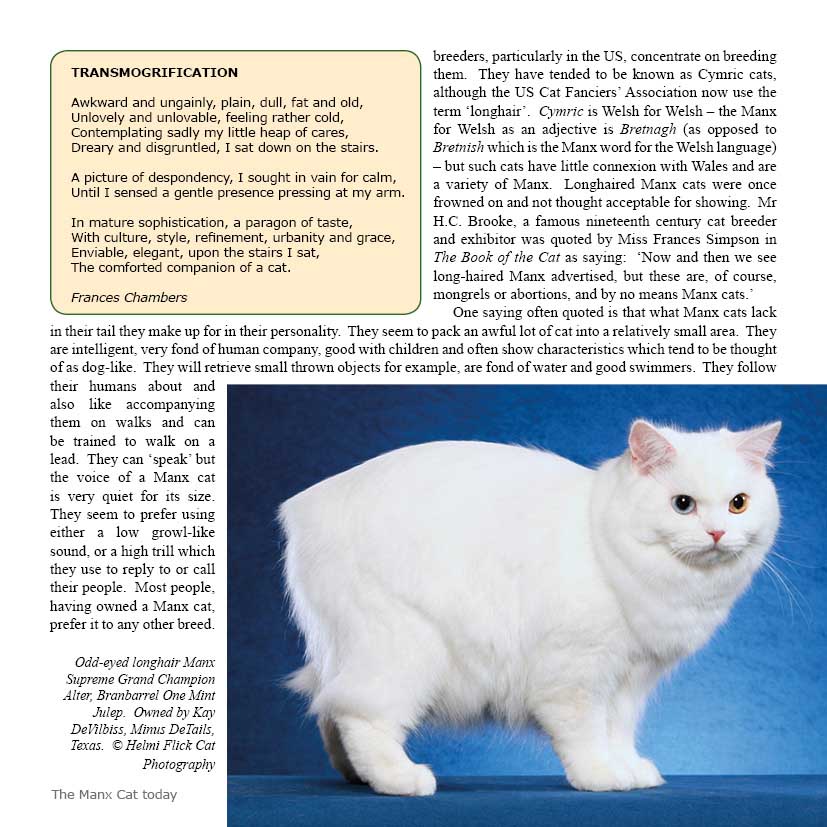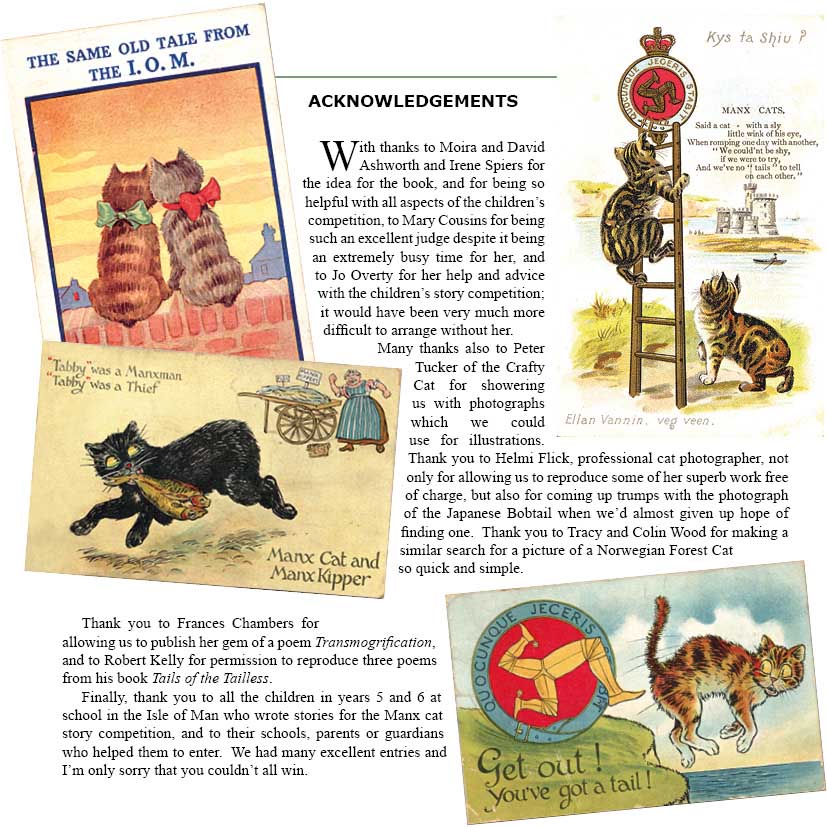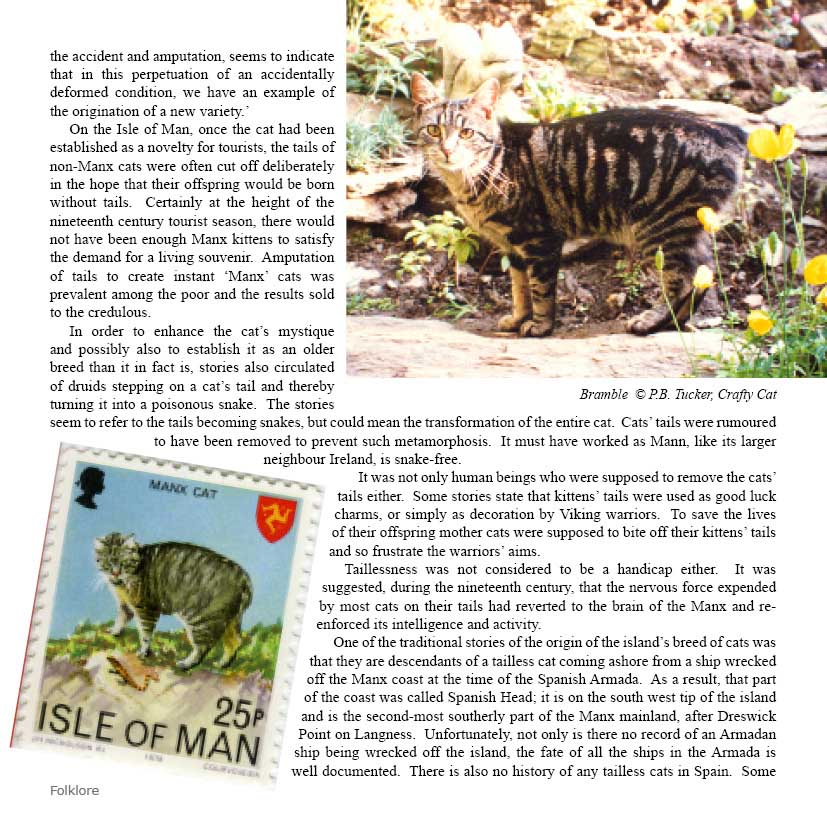A De-tailed Account of Manx Cats
£6.95
Written by Sara Goodwins
Explains the origin and folklore of these intelligent, friendly animals.
“What Manx cats lack in tail they make up for in personality. They seem to pack an awful lot of cat into a relatively small area!”
A De-tailed Account of Manx Cats, page 21
Did they lose their tails when Noah shut the door of the Ark too quickly?
Did Mannanan, Celtic sea god and the island's traditional protector, create the cats without tails?
Are they the offspring of a female cat and a male rabbit?
One of the Isle of Man's most famous symbols, the tailless cats have long been both a curiosity and a tourist attraction. They have appeared on stamps and coins, in stories and poetry. Notable owners of Manx cats have included Walt Disney, Edward VIII, and the painter J.M.W. Turner. James Joyce included a Manx cat in his novel Ulysses, as did Maeve Binchy in her short Christmas story The Best Inn in Town. A Manx cat was even ship's cat on the royal yacht Britannia.
Divided into three parts the book begins by tracing the origin of the Manx cat from when cats were first domesticated in the Middle East. Suggestions are made about the Manx cat's ancestors, and the reasons why the Manx is unique.
The second section provides a brief description of the breed today and discusses the animal's popularity in North America. There are now more Manx cats in the US than there are in their native island and probably in the whole of Europe. The section also tackles the complicated subject of genetics to show why the cat is tailless.
Various tales (groan!) which have arisen around the tailless cats are contained in the final section. From Druids removing cats tails to prevent them from becoming a magical threat, to mother cats biting off their kittens tails to save them from becoming a Viking adornment, stories about the cat's most noticeable feature have grown over the years and many are included.
Famous across the world, the reason why Manx cats have no tail is still subject to misunderstanding, comment and speculation. This book goes some way towards explaining the origin and folklore of these intelligent and friendly animals.
And… no, Manx cats cannot be ‘cured’ by retail therapy.
Tails of the tailless
Many folktales show the Manx cat losing its tail in an accident or as the result of protective action. Modern writers too appear to think that the Manx cat's taillessness is unfortunate. We thought it would be a good idea to give children on the Isle of Man the opportunity to correct this idea.
During the summer of 2012, pupils aged 10 and 11 at Manx schools were invited to write their own story about why the Manx cat has no tail. Stories had to be no longer than 500 words and were judged by representatives from Lexicon, Douglas's longest established bookshop, the Manx Family Library and Loaghtan Books.
The huge number of entries made the judges task quite difficult, but eventually agreement was reached. The winning entry is included in A De-tailed Account of Manx Cats.
By inviting the island's children to celebrate the Manx cat's most distinctive feature we're continuing a long tradition of story-telling on the island — and off it too.
Copyright 2013 Loaghtan Books. All rights reserved.









